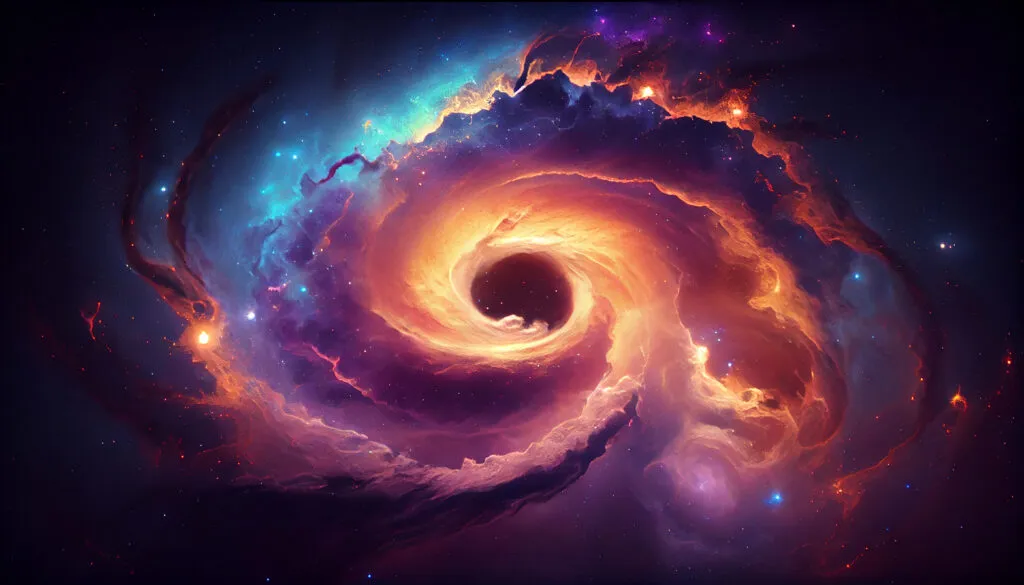Exploring The Dark Mysteries Black Holes
Introduction: The Dark Mysteries Black Holes
In the vast expanse of our universe, few celestial phenomena captivate the human imagination as profoundly as black holes. These enigmatic objects, characterized by their immense gravitational pull and seemingly infinite density, have intrigued scientists and stargazers alike for decades. In this blog post, we embark on a journey into the depths of space to unravel the mysteries surrounding black holes and delve into the fascinating science behind these cosmic wonders.
What Are Black Holes:
At its core, a black hole is a region in space where the gravitational pull is so strong that nothing, not even light, can escape its grasp. This phenomenon occurs when a massive star collapses under its own gravity at the end of its life cycle, forming a singularity—a point of infinite density—surrounded by an event horizon, the boundary beyond which no information or matter can return.
The Anatomy of a Black Hole:
Black holes come in various sizes, ranging from stellar-mass black holes, formed from the remnants of massive stars, to supermassive black holes, which reside at the centers of galaxies. Despite their different sizes, all black holes share common characteristics, including their gravitational influence and the presence of an event horizon.
Unveiling the Secrets of Black Holes:
While black holes are famously known for their ability to swallow anything that ventures too close, they also serve as cosmic laboratories for testing the laws of physics under extreme conditions. Scientists study black holes to explore concepts such as general relativity, quantum mechanics, and the nature of spacetime. Through observations using telescopes and advanced instruments, researchers continue to unravel the mysteries of black holes, including their formation, evolution, and role in shaping the universe.
Black Holes and the Fabric of Spacetime:
One of the most profound implications of black holes is their influence on the fabric of spacetime. According to Einstein’s theory of general relativity, massive objects like black holes warp the fabric of spacetime, causing it to curve around them. This curvature alters the trajectories of nearby objects and even affects the flow of time, leading to phenomena such as gravitational time dilation and gravitational lensing.
The Future of Black Hole Research:
As technology advances and our understanding of astrophysics deepens, the study of black holes continues to evolve. From the development of new observational techniques to the simulation of black hole mergers and the search for gravitational waves, scientists are at the forefront of unraveling the mysteries of these cosmic phenomena. Each discovery brings us closer to unlocking the secrets of black holes and gaining insights into the fundamental nature of the universe.
FAQs:
What exactly is a black hole?
A black hole is a region in space where the gravitational pull is so intense that nothing, not even light, can escape from it. This phenomenon occurs when a massive star collapses under its gravity, forming a singularity—a point of infinite density surrounded by an event horizon, the boundary beyond which no information or matter can return.
How are black holes detected if they cannot be seen?
While black holes themselves cannot be observed directly because they do not emit light, their presence can be inferred through the effects they have on nearby matter and light. Astronomers detect black holes by observing the behavior of surrounding objects, such as stars or gas clouds, that are influenced by the black hole’s gravitational pull. Additionally, advanced instruments like X-ray telescopes and gravitational wave detectors provide indirect evidence of black hole activity.
Do black holes only exist in space?
Black holes are a product of the laws of physics, particularly gravity, and can theoretically exist anywhere with sufficient mass compressed into a small enough volume. While most known black holes are located in space, there is speculation about the existence of microscopic black holes that may have formed during the early universe or in particle collisions within high-energy experiments.
What happens if something falls into a black hole?
Once an object crosses the event horizon of a black hole, it is trapped beyond the point of no return and cannot escape. The intense gravitational forces near the singularity cause the object to be stretched and compressed in a process known as spaghettification. Eventually, the object’s mass is added to the black hole’s, contributing to its growth.
Can black holes evaporate or disappear?
According to Stephen Hawking’s theory of Hawking radiation, black holes can emit radiation over time and lose mass, leading to their eventual evaporation. However, this process is incredibly slow for stellar-mass black holes and would take trillions of years to significantly affect their size. Some theoretical models also propose mechanisms by which black holes could potentially merge or dissipate through interactions with other objects or exotic phenomena, but these processes are still speculative and require further study.





